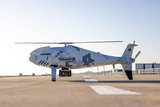Pacific Patrol Boat bids received
Australia has received bids from five contenders for its programme to build and donate patrol boats to 13 neighbouring South Pacific countries.
Under the $436 million (AU$594 million) Pacific Maritime Security Programme, also known as Project SEA 3036 Phase 1, Australia will build up to 21 steel-hulled patrol boats to replace 22 Pacific-class craft built from 1985-97. Life sustainment and personnel costs for the programme over the next 30 years are estimated at $990 million.
The new 40m optionally armed craft will be used primarily for maritime surveillance, fisheries protection and securing extensive exclusive economic zones. They will
Already have an account? Log in
Want to keep reading this article?
Read this Article
Get access to this article with a Free Basic Account
- Original curated content, daily across air, land and naval domains
- 2 free stories per week
- Personalised news alerts
- Daily and weekly newsletters
Unlimited Access
Access to all our premium news as a Premium News 365 Member. Corporate subscriptions available.
- Original curated content, daily across air, land and naval domains
- 14-day free trial (cancel at any time)
- Unlimited access to all published premium news
More from Naval Warfare
-
![US Navy takes delivery of New Jersey SSN]()
US Navy takes delivery of New Jersey SSN
The USN’s Virginia-class SSNs are replacing the old Los Angeles-class SSNs. The Virginia-class SSNs are fitted with the latest sensors and weapons and around 48 submarines are planned, with a total of 38 currently ordered.
-
![BMT and DNV partner to meet Australia’s heavy landing craft requirement]()
BMT and DNV partner to meet Australia’s heavy landing craft requirement
Under Project Land 8710 Phase 2, Australia has been seeking to acquire an undisclosed number of Littoral Manoeuvre Vessels to replace the Balikpapan-class. The programme has an estimated value of AU$1.4 billion (US$910 million), with IOC slated for 2032.
-
![Babcock to take over upkeep of Royal Navy Type-23 frigates]()
Babcock to take over upkeep of Royal Navy Type-23 frigates
The Royal Navy’s Type-23 Duke-class frigates for the UK Royal Navy were designed as anti-submarine warfare (ASW) ships but now have a multi-role function. Of the 16 Type 23s built, 12 remain in service with the Royal Navy and will be replaced by the Type-26 frigates before 2035.
-
![Austal completes autonomy trials with former Royal Australian Navy patrol boat]()
Austal completes autonomy trials with former Royal Australian Navy patrol boat
The work took place under the Patrol Boat Autonomy Trial (PBAT), which has been a collaboration between Austal, Greenroom Robotics, the Trusted Autonomous Systems Defence Cooperative Research Centre and the Royal Australian Navy’s (RAN) Warfare Innovation Navy Branch.
-
![Singapore launches fourth and final Type 218SG submarine]()
Singapore launches fourth and final Type 218SG submarine
The era of southeast Asian submarine modernisation has been in full swing fuelled by growing tensions in the South China Sea.

























